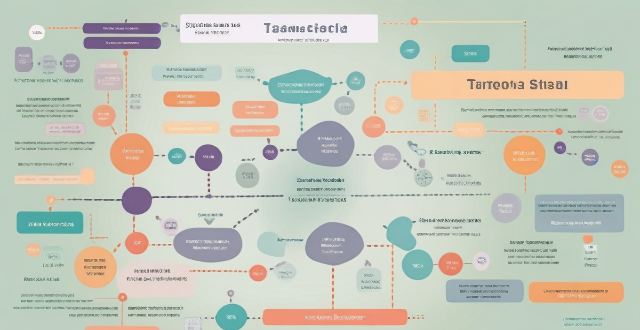Class School

What questions should I ask during a school visit or open house ?
Visiting a school or attending an open house is a valuable opportunity to gather information about the educational environment and culture of the institution. To make the most of your visit, it's important to ask thoughtful questions that will help you understand the school's philosophy, curriculum, and community. Key questions to consider include those related to school culture and philosophy, academics and curriculum, extracurricular activities and facilities, teachers and staff, student support and services, parental involvement and communication, safety and health, and closing questions to clarify next steps. By asking these questions, you can gain a comprehensive understanding of the school and be better equipped to make an informed decision about your child's education.

How important is student-teacher ratio in school selection ?
The student-teacher ratio is a crucial factor in school selection, impacting academic performance, personal attention, and classroom management. A lower ratio allows for individual attention, customized learning, and timely feedback, promoting better understanding and improved academic performance. It also creates opportunities for mentorship, emotional support, and social development, contributing to a positive learning environment. Effective classroom management is more feasible with a lower ratio, leading to reduced discipline issues, increased participation, and flexible teaching strategies. Prioritizing schools with favorable ratios can contribute to a successful educational journey.

What are the best methods for taking notes in class ?
The text provides a comprehensive overview of four effective methods for taking notes in class, namely the Cornell Method, Outlining Method, Mind Mapping Method, and Sentence Method. The Cornell Method involves dividing your paper into three sections to organize your notes, while the Outlining Method uses headings and subheadings to create a hierarchical structure. The Mind Mapping Method is a visual technique that involves creating a diagram of connected ideas, and the Sentence Method involves taking notes in complete sentences to better understand and retain information. Each method has its own unique steps and benefits, making it important for students to choose the one that works best for them.

What are the key factors to consider when choosing a school ?
Choosing a school involves evaluating academic programs, teacher qualificationChoosing a school involves evaluating academic programs, teacher qualificationcurricular activities, location, By taking these factors into account, you can select a school that aligns with your interests, goals, and budget.

What are the key factors to consider when choosing an international school or program ?
When selecting an international school or program, consider factorsWhen selecting an international school or program, consider factorsation and reputation, curriculum and extracurricular activities and opportunities for internships or study abroad, cultural diversity and inclusivity, location and facilities, and cost and financial aid options. These considerations can help ensure that the chosen institution aligns with your academic goals and personal preferences, fostering both academic success and personal growth.

What is the impact of school size on the overall learning experience ?
School size affects academic performance, social interactions and extracurricular activities. Small schools offer personalized attention and strong teacher-student relationships but may lack diversity and extracurricular options. Large schools provide diverse course offerings and a wide range of extracurricular activities but may have limited personalized attention and increased competition. Choosing the right school size depends on individual needs and preferences for the best learning experience.

How do I compare different schools based on their academic performance ?
When comparing different schools based on their academic performance, consider factors such as school rankings, standardized test scores, graduation rates and college acceptance rates, availability of advanced placement (AP) courses and dual enrollment options, extracurricular activities and clubs, student-teacher ratio and class size, and reviews from current and former students, parents, and educators.

What role does location play in selecting the right school ?
The role of location in selecting the right school is crucial as it affects various aspects such as accessibility, safety, community environment, and extracurricular opportunities. Accessibility is a primary consideration, with parents preferring schools that are easily accessible from their homes or workplaces. Safety is another important factor, with families tending to prefer schools located in areas with lower crime rates and good pedestrian safety measures. The community environment surrounding a school can significantly impact the overall experience of students and families, with local amenities and cultural diversity playing a role. Finally, the location of a school can determine the availability and variety of extracurricular activities available to students. By carefully evaluating these factors, families can choose a school that meets their academic needs and provides a supportive and enriching environment for their children's growth and development.

How to start a new extracurricular club at school ?
Starting a new extracurricular club at school can be an exciting and rewarding experience. It allows you to pursue your interests, meet new people, and develop leadership skills. Here are the steps to follow: 1. Identify your interests and goals for starting the club. What do you want to achieve? Is it to learn a new skill, share your passion with others, or make a difference in your community? Having a clear vision will help you stay motivated and focused throughout the process. 2. Research existing clubs at your school to see if there are any similar groups already in place. This will help you determine if there is a demand for your proposed club and what unique aspects you can bring to it. 3. Gather support from other students who share your interests and goals. Talk to them about your idea and ask if they would be interested in joining. You can also seek advice from teachers or staff members who may have experience starting clubs. 4. Create a proposal that outlines the purpose, goals, and structure of your club. Include details such as meeting times, membership requirements, and potential activities. Make sure your proposal is well-organized and clearly communicates your vision. 5. Submit your proposal to the appropriate person or committee at your school. This may vary depending on your school's policies and procedures. Be prepared to answer questions and provide additional information if needed. 6. Once your proposal is approved, start recruiting members by spreading the word through posters, social media, and word of mouth. Host an interest meeting or event to introduce potential members to your club and its activities. 7. Plan activities and events that align with your club's goals and interests. This could include workshops, guest speakers, service projects, or competitions. Make sure to involve your members in planning and decision-making processes. 8. Promote your club through various channels such as school announcements, newsletters, and social media platforms. Attend school events and showcase what your club does to attract more members and raise awareness. 9. Regularly evaluate your club's progress and adjust accordingly. Solicit feedback from members and stakeholders to improve and ensure that your club continues to meet its goals and objectives.

What are the challenges of implementing home teaching strategies for high school students ?
Implementing home teaching strategies for high school students can be challenging due to lack of resources, time constraints, difficulty in maintaining discipline, limited expertise in subject matter, and difficulty in assessing student performance. However, with careful planning, dedication, and support from educators and other professionals, these challenges can be overcome to provide high-quality education for high school students at home.

How do school sports programs influence the physical activity levels of teenagers ?
School sports programs have a significant impact on the physical activity levels of teenagers. They encourage regular exercise and help develop essential life skills such as teamwork, communication, and leadership. These skills are valuable in personal and professional settings. School sports programs also play a vital role in building healthy habits among teenagers by promoting proper nutrition, rest, and recovery. Finally, school sports programs provide opportunities for personal growth and development through challenging physical and mental activities. Overall, school sports programs help teenagers lead active and fulfilling lives both inside and outside of the classroom.

How can data analytics be used to inform school policy decisions and resource allocation ?
Using data analytics can greatly inform school policy decisions and resource allocation. By analyzing data, schools can identify areas for improvement, personalize learning experiences, evaluate teacher performance, allocate resources effectively, and enhance student support services. This approach leads to improved student outcomes, teaching quality, and resource use.

How can I gauge the level of parental involvement and community support at a school ?
Gauging the level of parental involvement and community support at a school is crucial for parents when choosing an educational institution for their child. This can significantly impact a student's academic performance and overall development. To gauge these factors, parents can observe school events, talk to other parents, and research the school's reputation. When observing school events, parents should attend open houses, sports games/concerts, and volunteer opportunities to assess the turnout and engagement of parents during these events. A high turnout and active participation suggest strong parental involvement and community support. Parents can also connect with other parents through social media groups, PTA meetings, school drop-off/pick-up times, and school events to ask about their experiences regarding parental involvement and community support at the school. Asking about their level of involvement, supportiveness of the school, communication channels, and impact on student performance can provide valuable insights. Researching the school's reputation online through reviews, rankings, news articles, social media, forums, and message boards can also help gauge parental involvement and community support. Analyzing historical data such as enrollment trends, fundraising results, alumni success rates, and school surveys/feedback can further indicate the level of these factors over time. In conclusion, gauging the level of parental involvement and community support at a school involves attending school events, talking to other parents, and researching the school's reputation. By doing so, parents can make informed decisions about choosing the right school for their child that fosters a supportive and engaging environment conducive to academic success and overall development.

How do I evaluate the cultural diversity and inclusion efforts of a school ?
Evaluating the cultural diversity and inclusion efforts of a school involves examining various aspects such as administrative policies, curriculum, student experience, community engagement, and feedback mechanisms. Key factors to consider include the presence of a clear diversity statement in policies, fair hiring and promotion practices, multicultural curriculum, teacher training, diverse student organizations, support services for diverse students, collaboration with local communities, family involvement programs, regular surveys and feedback mechanisms, and continuous improvement plans based on feedback. By assessing these elements, one can gain insight into the effectiveness of a school's efforts to promote cultural diversity and inclusion.

What role do parents play in ensuring their child's special education needs are met at school ?
Parents play a crucial role in ensuring their child's special education needs are met at school. They can do this by understanding their child's needs, collaborating with school personnel, and providing support at home. Advocating for your child involves working with professionals to assess their needs, keeping detailed records, and regularly communicating with teachers and other professionals. Collaborating with school personnel means attending IEP meetings, maintaining open lines of communication, and viewing yourself as a partner with the school. Providing support at home involves ensuring consistency between home and school environments, helping with homework, and offering emotional support. Building positive relationships with school personnel is essential, as is addressing challenges through problem-solving and persistence. By being proactive, informed, and engaged, parents can play a significant role in ensuring their child's special education needs are met at school.

What factors determine the amount of a student loan ?
The amount of a student loan is determined by several key factors, including eligibility criteria set by the lender, the cost of attendance at the chosen school, the student's financial need, and the type of loan (federal or private). Other influential factors include repayment options, school choice, and the availability of other financial aid. Students should consider all these elements and explore all possible funding options before taking out a loan.

What is the best way to take notes in class ?
The article offers advice on effective note-taking during classes, emphasizing the importance of choosing a method (notebook or laptop), organizing notes with clear structure, focusing on key concepts, using visual aids, reviewing and revising notes, asking questions, and collaborating with classmates. These strategies are crucial for retaining information and understanding lecture content, ultimately contributing to academic success.

Is there a connection between sports and improved mental well-being ?
The relationship between sports and improved mental well-being is evident in numerous studies, indicating that engaging in physical activities significantly contributes to an individual's overall psychological well-being. This connection can be analyzed from various angles, including physiological responses, social interactions, personal development, and the role of subjective class identity and health. Physiological responses to sports include endorphin release and stress reduction, while social interactions provide opportunities for teamwork and belongingness. Personal development through sports enhances self-esteem and discipline. The mediating roles of class identity and health also play a part in this relationship. Overall, sports participation positively affects individuals' subjective well-being through various mechanisms, enhancing their mental health and overall quality of life.

What are the benefits of taking a cooking class while on vacation ?
Taking a cooking class while on vacation offers numerous benefits, including improved culinary skills, cultural immersion, social experiences, personal growth, and health benefits. Learn new techniques and local cuisine, understand traditions, practice language skills, meet new people, build confidence, enhance creativity, incorporate healthy habits, and relieve stress.

What are the best ways to take notes during a lecture or class ?
The given text provides a detailed guide on how to take effective notes during a lecture or class. It emphasizes the importance of active listening, organizing one's notebook, using shorthand and abbreviations, focusing on key ideas, utilizing visual aids, reviewing notes, collaborating with peers, and leveraging technology for note-taking. The strategies aim to enhance learning and retention by capturing essential information efficiently.

How much should I invest in each type of asset class ?
The text provides a guide on how to determine the allocation of funds across different asset classes based on investment goals, risk tolerance, time horizon, and financial situation. It suggests that younger investors should allocate more towards stocks while older investors should gradually shift towards safer investments. The text also emphasizes the importance of regularly reviewing and rebalancing the portfolio and seeking professional advice when unsure about investment decisions.

What are the most romantic high-class restaurants for a special occasion in Rome ?
Rome, known as the city of love, boasts a variety of high-class restaurants perfect for special occasions. Among them are Aroma with its elegant ambiance and seasonal dishes; Il Conventino, offering historic charm and vegan options; La Pergola, renowned for its Michelin stars and innovative cuisine; Ristorante La Terrazza dell'Eden, providing chic ambiance and internationally influenced Italian fare; and Imàgo, known for its modern style and seafood specialties. Each restaurant offers a unique experience to make your special occasion unforgettable.

What strategies can be used to promote parent-teacher collaboration in schools ?
Promoting parent-teacher collaboration in schools is crucial for student success and well-being. Strategies include open communication, involvement opportunities, parent education, shared responsibility, technology integration, and celebrating diversity. Regular updates, volunteer programs, workshops, home-school agreements, online portals, and multicultural events are among the tactics that can foster a strong partnership between parents and teachers.